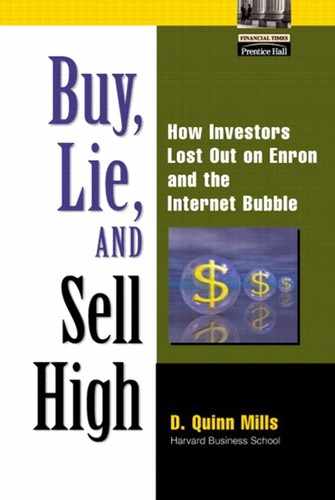Whom to Back
There is nothing more fundamental to a successful venture capital business than selecting the right entrepreneurs to back. Whatever the outcome for a company, its leadership will bear the major responsibility.
Andy Mills, who built a start-up, Business Research, Inc., into what became First Call and Thomson Financial Services (a multibillion dollar company) says that “Building a big business from a start-up takes 10 to 15 years.” He adds that to do it, a chief executive officer has to do four things:
Have a long-term perspective.
Have a growth orientation.
Be people oriented.
Be deliberate about the culture put in place.
The role of venture capitalists is to find people to run new companies who can do these four things successfully. But during the bubble, as we shall see in more detail that follows, venture capitalists ceased to seek such people and looked instead for entrepreneurs who would rush to an IPO. The result most of the time for the entrepreneurs, their companies, and the public who bought stock in the companies after an IPO, was disaster.
It wasn't that many entrepreneurs didn't try to build large and stable businesses in the manner described by Andy Mills; they did. But for too many of them, the bubble shut off the opportunity midstream; for others, their venture backers never let them look to the long term, pushing them to do the wrong things; others saw the opportunity to get rich by appearing to be building a company, found investing partners, and did it themselves, with no attention to the preceding four factors.
For example, following is a suggestion made to The Wall Street Journal for a monument to the dot-com bubble: “Because we had absolutely NO communication with our management, I propose the dot-com monument should be a GIANT soda machine from our office, with statues of me and my colleagues looking at the soda price to determine if we were going out of business. First they were free, then subsidized, then face value—but when they became part of the revenue model, we knew we were in trouble.”[48]
That abandoning traditional criteria for choosing whom to finance was a dangerous game was recognized by some in the venture business. For example, Richard M. Burnes, Jr., an experienced venture capitalist, told an audience of entrepreneurs in the late summer of 1999 that “What you're all talking about is really a disease that's eating this whole industry at its heart.” The disease, as described by a reporter who covered the speech, was “the desire to found a dot-com business, take it public, and then take the money and run.”
“I think it's really important for all of you entrepreneurs… to remember this: This will ultimately come crashing down because companies will go public too soon, they will miss their earning and the whole thing will just cascade down… The whole thing is much too oriented towards running, towards cashing-out rather than building a strong organization with good people, good products and a defensible strategy.”[49]
He was exactly right.
